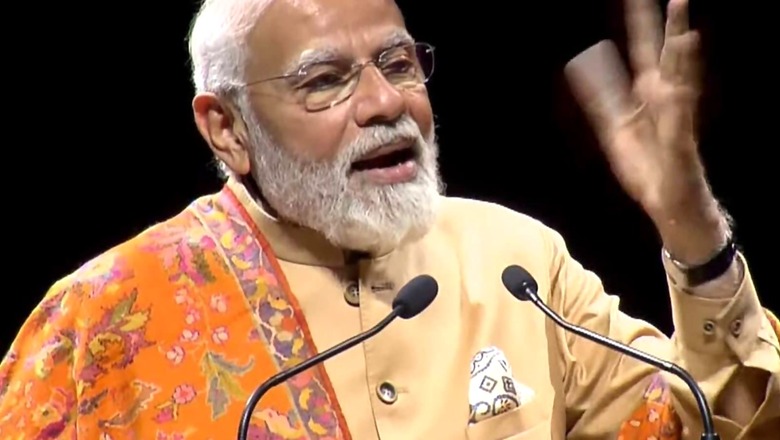
views
Five central ministries and an institution dealing in geo-informatics will work together to implement Prime Minister Narendra Modi’s idea of setting up 75 Amrit Sarovars (ponds) in each district of the country and a substantial number of these structures would come up by this August 15.
The prime minister had started the Amrit Sarovar Abhiyan on April 24 with a deadline to develop 75 Amrit Sarovars in every district by August 15, 2023. About 50,000 such Amrit Sarovars are to come up across India.
“This exercise would be begun as early as possible so as to complete a substantial number of structures by August 15, 2022. Those states, which may find it difficult to adhere to the above timeline on account of early rains or other such factors, e.g. the states in the North-East, may seek permission for following a different timeline. In any case, all such Amrit Sarovars should be completed by end of Amrit Varsh i.e. 15th August 2023,” the guidelines for the project, reviewed by News18, say.
The guidelines say this mission would be run with a “Whole of Government” approach in all its aspects and a wide swath of ministries and organisations would work together to accomplish the goals. This will include the Ministry of Rural Development, Ministry of Jal Shakti, the Ministry of Culture, Ministry of Panchayati Raj, Ministry of Environment, Forest & Climate Change and Bhaskaracharya National Institute for Space Applications and Geo-informatics (BISAG-N).
How the Project will be Implemented
The project was launched by PM Modi in the backdrop of the acute water crisis that the country faces and the Amrit Sarovars are expected to play an important role in increasing the availability of water, both on surface and under-ground.
Each Amrit Sarovar will have pondage area of a minimum of one acre with a water-holding capacity of about 10,000 cubic meter. All rural districts will develop at least 75 Amrit Sarovars, totalling about 50,000 Amrit Sarovars in the country, the guidelines say.
The guidelines say that in order to optimise the benefit of the Amrit Sarovars and to ensure that the implementation is done in the most credible manner, latest and most relevant technologies like remote sensing and geospatial will be used extensively from site selection till its completion.
An Amrit Sarovar Portal developed by BISAG-N will be utilised to generate list of 100 potential sites for every district on the basis of topography and geology. The 75 top-ranked sites would be selected after a consultative exercise. “Sites of Sarovars located in the villages of freedom fighters and martyrs should be prioritised,” the guidelines say.
Districts have been asked to draw up an Action Plan which should include detail of sites for Amrit Sarovars, sources of funding, executing agencies, agencies responsible for monitoring and documentation, timeline for activities, manner of citizen mobilisation and celebration of creation of Amrit Sarovars. The site will be approved by special Gram Sabha, which will also name Panchayat Pratinidhi, who will on its behalf supervise development of Amrit Sarovar, the mission guidelines say.
Celebrating Freedom Fighters
The guidelines also say that commemorative plantation of trees should be done at Amrit Sarovar work site on August 15, 2022, by a freedom fighter or her or his family member or by the family of martyr post-independence or a local Padma awardee. Foundation stone for the Amrit Sarovar will be led by a similar person, the guidelines say.
“People may also participate by donating construction material, benches and by Shram Daan. It may also seek such support through crowd sourcing and CSR contributions. If village community desires beautification works on Sarovar site, it may mobilise necessary donations,” the guidelines say.
It says that on the occasion of every Independence Day, the Tricolour should be hoisted at the Amrit Sarovar worksite by the freedom fighter or his or her family and they be “given a place of pride” in all associated events. Further, all Amrit Sarovar will be geo-tagged at three different phases i.e. before the construction, during the construction and after the completion of asset creation using GeoMGNREGA app of Mahatma Gandhi NREGS, the guidelines say.
Read all the Latest India News here


















Comments
0 comment